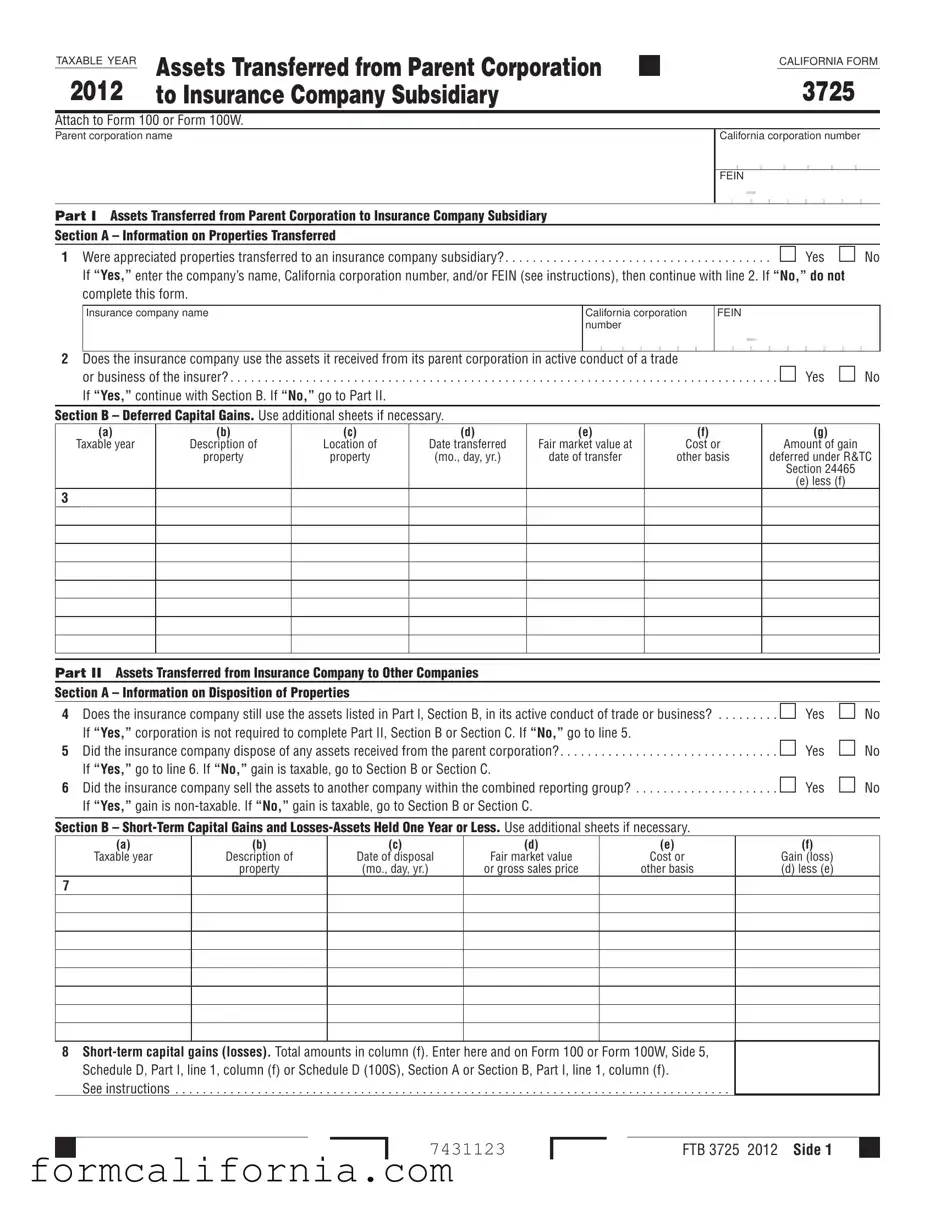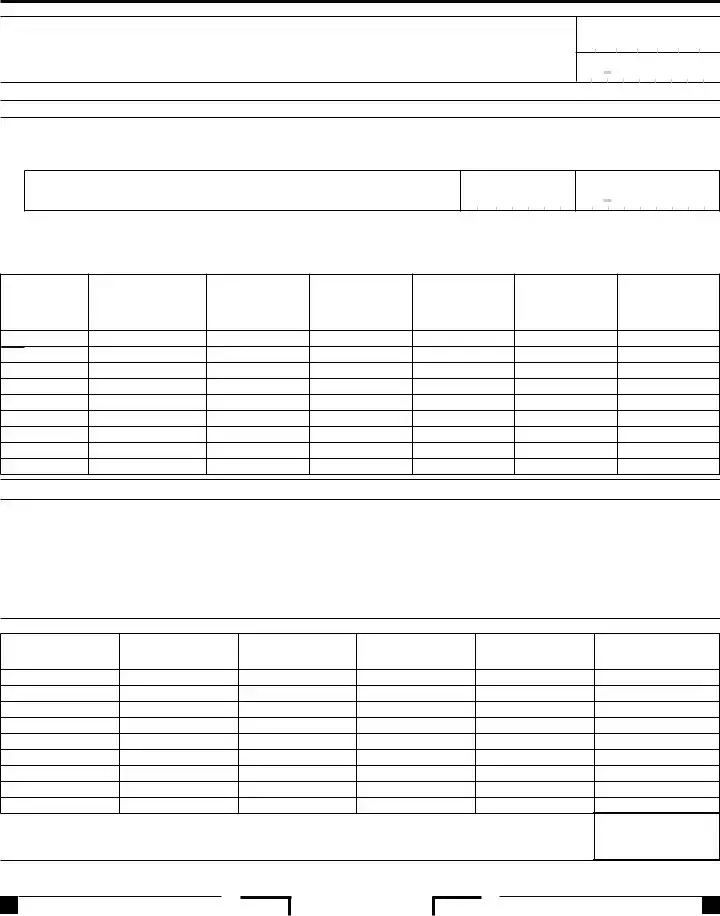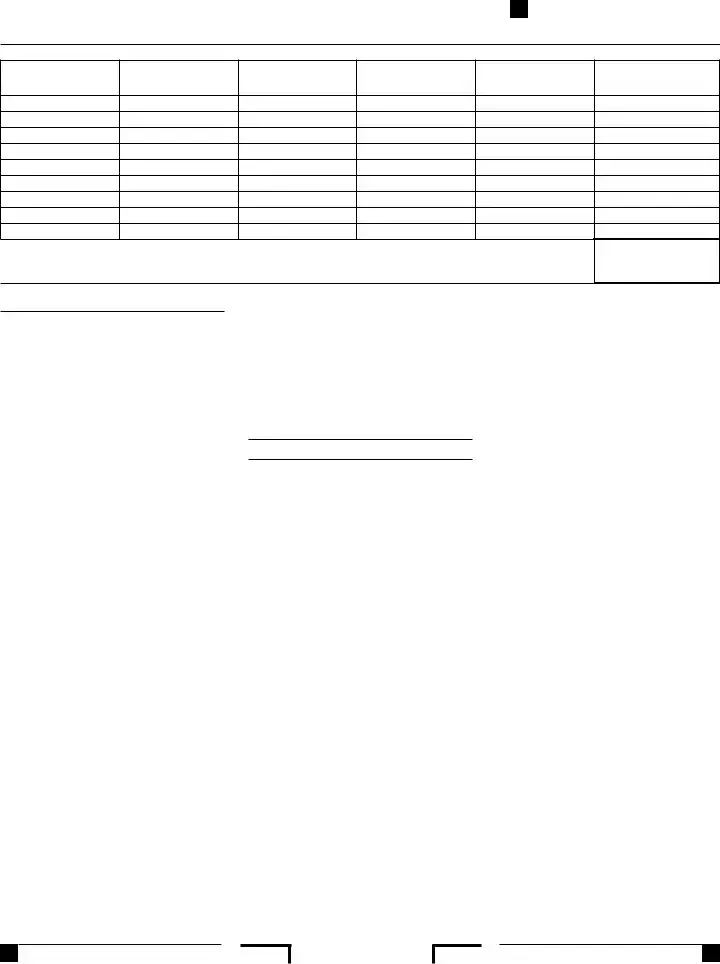The California Form 3520, Power of Attorney, shares similarities with Form 3725 in its specificity to California state tax matters. While Form 3725 deals with the transfer of assets between a parent corporation and its insurance company subsidiary, Form 3520 is utilized to authorize an individual to represent the taxpayer before the California Franchise Tax Board. Both forms are essential in managing tax responsibilities and ensuring compliance with California's tax laws, emphasizing the need for accurate representation and reporting in financial transactions.
Form 568, Limited Liability Company Return of Income, is akin to Form 3725 due to its role in reporting and managing tax obligations for specific business entities within California. Form 3725 addresses the transfers of assets between parent corporations and insurance subsidiaries, while Form 568 caters to the income reporting requirements of limited liability companies. Both serve as critical instruments for entities operating under California law to disclose their financial activities, ensuring adherence to state tax regulations.
The California Form 100, Corporation Franchise or Income Tax Return, is closely related to Form 3725, as both pertain to corporate tax obligations in California. Form 3725 supplements Form 100 when a parent corporation transfers assets to an insurance company subsidiary, requiring detailed reporting of such transfers. Form 100, on the other hand, provides a broader overview of a corporation's income and taxes due to the state. Together, they facilitate comprehensive tax reporting for corporations engaged in asset transfers, ensuring all relevant transactions are accounted for accurately.
Form 100W, California Corporation Franchise or Income Tax Return — Water's-Edge Filers, similarly to the 3725, is tailored for corporations that have opted for water's-edge election in California. While Form 3725 is used to report asset transfers to insurance subsidiaries, Form 100W serves water's-edge filers in declaring their income and computing tax based on their domestic and international business operations limited to a water's-edge basis. Both forms are pivotal for corporations in ensuring compliance with the state's nuanced tax requirements and elections.
The California Form 199, California Exempt Organization Annual Information Return, while designed for tax-exempt organizations, shares a common purpose with Form 3725 in terms of reporting obligations to the California Franchise Tax Board. Form 3725 focuses on asset transfers involving a corporate parent and an insurance subsidiary, whereas Form 199 is geared towards exempt organizations reporting their annual financial information. Both emphasize the importance of transparency and detailed accounting in maintaining compliance with state tax laws.
Form 109, California Exempt Organization Business Income Tax Return, is another document with similarities to Form 3725, as it is relevant for tax-exempt organizations in California reporting their unrelated business income. While Form 3725 details asset transfers between parent corporations and insurance subsidiaries, Form 109 targets the business income aspects of exempt organizations. Both forms play a crucial role in delineating specific tax responsibilities and ensuring that all entities are accurately reported and taxed according to California law.
The California Schedule D (100, 100W, 540, 540NR, or 109), Capital Gain or Loss, is directly connected with Form 3725 through its treatment of capital gains and losses. Schedule D is used in conjunction with Form 3725 to report the detailed outcomes of asset transfers, specifically gains or losses realized from such transactions. While Schedule D handles the broader spectrum of capital gains or losses, Form 3725 offers a specialized focus on transactions involving a parent corporation and its insurance company subsidiary, ensuring precise tax reporting.
Form 541, California Fiduciary Income Tax Return, relates to Form 3725 through its focus on trust and estate taxation in California. Whereas Form 3725 is concerned with the corporate and insurance sectors, Form 541 captures the income, deductions, and credits of trusts and estates. Both documents are integral to the comprehensive landscape of tax reporting and compliance within the state, highlighting the necessity of detailed and accurate financial disclosures across different entities and transactions.
Finally, the California Schedule R, Apportionment and Allocation of Income, parallels Form 3725 in its role in specifying how businesses divide income for tax purposes. Schedule R is necessary for companies operating in multiple jurisdictions, much like Form 3725 is required for detailing asset transfers within corporate families. Both forms aid in clarifying the allocation of income or assets in complex business structures, ensuring tax compliance with California's intricate tax laws and regulations.


